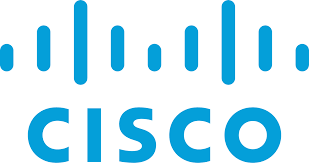思科 (CSCO.US) 2025财年第四季度业绩电话会
文章语言:
简
繁
EN
Share
Minutes
原文
会议摘要
Cisco Systems reported robust financial results for Q4 and FY2025, exceeding guidance with strong revenue, earnings per share, and gross margin. The company achieved significant shareholder value returns, totaling $12.4 billion for the fiscal year. Emphasizing readiness for the AI era, Cisco highlighted record AI infrastructure orders, expanding product orders globally, and increasing demand for core networking and security solutions. Initiatives in campus refresh, AI network connectivity, and security integration are key. For FY2026, Cisco forecasts durable growth, financial discipline, and substantial capital returns, focusing on AI infrastructure, enterprise AI, and campus networking. Guidance assumes current tariffs and exemptions remain unchanged, projecting revenue between $59 billion and $60 billion, and non-GAAP earnings per share from $4 to $4.06.
会议速览
Cisco announced its financial performance for the fourth quarter and full fiscal year of 2025. The investor relations officer introduced the meeting agenda, mentioning that they will discuss both GAAP and non-GAAP financial results, as well as product, geographic, and customer order status. They also emphasized the uncertainties of risk factors and forward-looking statements. The meeting also provided supplemental materials on the website and future financial guidance.
At the end of fiscal year 25, the company achieved strong performance, with both revenue and gross profit margins exceeding expectations. Profit performance was excellent, with earnings per share surpassing the upper limit of guidance. Annual recurring revenue, unfinished performance obligations, and subscription revenue all showed robust growth, laying a solid foundation for future development. The total capital return for fiscal year 25 reached $12.4 billion, accounting for 94% of free cash flow. Facing the advent of the AI era, the company, with its leading network systems and AI-native security solutions, meets the needs of enterprises upgrading their networks, especially in the AI infrastructure field. In the fourth quarter, the company received a record-breaking amount of orders, totaling over $2 billion for the whole year. Looking ahead to fiscal year 26, the company plans to achieve even stronger growth, focusing on AI networks and security solutions to address the increasing network traffic and threat environment.
The focus of the conversation was on the strong order performance of AI infrastructure, especially in the collaboration with NVIDIA and the layout in the three major areas of AI training, inference, and network connectivity. At the same time, it emphasized the synergies of network security and product innovation, such as Splunk's cross-selling results and the release of AI Canvas, aimed at building AI-ready data centers and future workplaces for enterprises.
Discussed Cisco's promotion of product innovation, optimization of customer experience, and enhancement of internal operational efficiency through AI and security technologies in FY25, emphasizing the core role of AI in product design and customer service, as well as its contribution to shareholder value. In addition, the five-year growth of software and subscription revenue was reviewed, as well as the key role of the team in driving business transformation.
Company Q4 performance was excellent, with revenue and non-GAAP net profits exceeding expectations. Product and service revenue increased, gross margins improved, and cash flow was strong. Overall, the performance throughout the year was steady, and shareholder returns were significant.
The company plans to achieve growth through innovative investments and strict cost control. It is expected that the revenue for the fiscal year 2026 will be between 59 billion and 60 billion. The non-GAAP earnings per share are estimated to be between $4 and $4.06. Additionally, the company expects the revenue for Q1 of 2026 to be between 14.65 billion and 14.85 billion. The non-GAAP gross margin is projected to be between 67.5% and 68.5%, with an operating profit margin of 33% to 34% and earnings per share of 97 cents to 99 cents. The company will leverage its global supply chain advantages to mitigate tariff impacts, while continuing to focus on sustainable growth and capital returns.
Discussed the income growth potential brought about by AI opportunities, as well as the expected impact of campus refresh cycles on next year's income. It was mentioned that despite the presence of AI opportunities, the forecasted decrease in income growth rate is mainly attributed to later year-over-year comparisons rather than changes in demand. Emphasized that the evaluation and deployment cycle for Cat 9K products is longer, and it is expected that campus refresh will become an important revenue driver in the next year. Additionally, it was pointed out that the growth in the first quarter was affected by the inclusion of Splunk, which made the previous growth rate appear higher.
The conversation discussed Splunk's growth in the security business, especially the strong order growth of new products such as Sassy XDR Hyper Shield and AI defense, as well as double-digit growth in security orders in non-US federal markets globally. It also mentioned the CFO's priorities, including financial planning and continuous optimization strategies for the security business.
The speaker reviewed the company's 25-year development history, thanking the previous leaders for driving the transformation of software and subscriptions. Looking forward to the future, they emphasized growth in AI infrastructure, enterprise AI, cloud services, network security, and campus network upgrades, promising to focus on sustainable profit growth, financial discipline, and shareholder value return. In the field of network security, they mentioned attracting over 300 new customers through Splunk, demonstrating the effectiveness of the strategy and the team's efforts, and strengthening confidence in security strategies.
The conversation revolves around whether orders are placed ahead of schedule due to budget cuts or concerns about tariffs. The analysis team, through monitoring data from multiple dimensions, has not found any significant early ordering trend. At the same time, the discussion also touched upon the long-term ratio expectations between the system and optical parts in the AI business. It is believed that the current ratio of two to three parts is expected to remain stable, with no signs of major adjustments.
The discussion focused on the recovery of the network industry cycle, particularly the impact of the AI revolution on cloud service providers, enterprises, and telecommunications operators in modernizing their networks. It emphasized the role of AI in driving network upgrades, as well as the increasing demand from enterprises for AI services to enhance usage and build inference capabilities. Additionally, it mentioned the yet-to-be-launched campus upgrades by enterprises, as well as the new technological applications in data center network business by Cisco and the significant growth of WiFi 7. Finally, it expressed confidence in maintaining a growth rate of 2%-5% in core network business.
Discussed the impact of AI infrastructure orders on income and future expectations, as well as the performance of orders in various segments of the network business, including data center switches, wireless routers, etc., emphasizing strong growth in web-scale businesses.
The conversation involves the revenue and shipment status of AI backend orders, indicating that these orders are progressing smoothly in fiscal year 25 as expected, with approximately 1 billion US dollars in revenue expected for the whole year. These orders mainly come from large network customers, and the revenue confirmation situation is in line with expectations.
Discussed the adoption of AI applications by companies, as well as the potential benefits brought by collaboration with NVIDIA. Mentioned the initial growth in AI orders from companies, and anticipated more applications and proof of concept projects driving the demand for network connectivity and security in the future. Emphasized progress in collaboration with NVIDIA, expecting significant financial returns in the coming years.
Discussed the growth deceleration trend of service revenue decreasing from 6.5% to 0% and future expectations, while evaluating the risks of network growth slowdown driven by cloud investments, especially considering the potential impact of slowing growth of large customers such as Oracle and Meta.
Discussed the growth of service business over the past year, pointing out that services usually follow product growth, and it is expected that future service revenue will increase with the growth of the network. At the same time, analyzed the growth of capital expenditure, indicating that AI investment is not a temporary trend, and the company adjusts its strategy based on customer demand signals.
Analysts are concerned about the short-term performance of the security business, believing that it needs to accelerate significantly to reach the long-term growth target of 15% to 17%. There was a discussion on whether to reassess the growth expectations for the business, and doubts were raised about its future growth potential.
Discussed the close collaboration with AMD, aiming to provide highly integrated solutions, especially in the AI defense and identity management fields, which have shown strong growth in the security sector. By the end of the year, it is expected that these emerging technologies will account for more than two-thirds of the security portfolio, becoming the main driver of growth. The collaboration will focus on providing customers with a seamless experience, ensuring the seamless integration of security and technology.
Discussed the amount reduced by each $9,000 category refresh corresponding to other solutions, involving security products such as wireless LAN and firewalls. Analyzed capital utilization strategies, especially in large mergers and acquisitions as well as in the security sector. Mentioned considerations for the identity and privilege access space following the CyberArk transaction, predicting the growth of interactions between AI and machines in the future.
The discussion revolves around whether the Cat 9K can be linked to other devices on campus. Although the idea is considered good, it is pointed out that implementation would be difficult due to the consideration of numerous new devices such as smart routers, switches, and WiFi access points. It is then mentioned that the capital expenditure plan remains unchanged, and discussions on identity authentication-related issues are held.
Discussed returning $12.4 billion to shareholders in the 2025 fiscal year, emphasizing business growth, dividend increases, and offsetting dilution as top priorities. Mentioned the core role of identity verification in a zero-trust architecture, as well as strengthening platform strategy through acquisitions like Duo and Orc, showcasing the advantages of real-time network, security, and identity integration, demonstrating technological leadership without waiting for mergers and acquisitions to be completed.
The conversation discussed the contribution of AI technology to the future growth of companies, especially its impact on online businesses, as well as the potential effects of the current tariff policies on company costs and gross profit margins. The company expects AI to significantly improve performance, while also explaining in detail the specific assumptions of different countries' tariffs on costs, emphasizing that the duty-free policy for certain goods such as semiconductors offsets some of the negative impacts.
The conversation revolved around the growth expectations of different business departments in the company, focusing on the prospects of service providers, enterprises, and public sectors. It also mentioned the goal for the future market share of Silicon One technology in Nexus smart switches, with an estimated target of reaching half within three years.
The conversation focuses on the acceleration of orders for sovereign AI projects in Europe, the Middle East, and Africa, as well as market opportunities in the sovereignty and technology solutions field. It is mentioned that despite some weakness in public sector orders, security and enterprise orders in regions such as the UK, Germany, and Saudi Arabia are strong. Additionally, due to a focus on data sovereignty and autonomous technology stacks, there is an increasing demand for locally deployed solutions such as Splunk and Webex in this region. It is expected that sovereign AI projects will start generating order flow in the second half of the year, leading to corresponding revenue.
Discussed the long-term potential of enhancing Ethernet connectivity in backend AI networks and potential new chips that could be introduced for this opportunity. Additionally, the impact of the integration of the Meraki and Catalyst platforms on hardware procurement behavior in campus networks was analyzed, pointing out that the convenience of cloud management may encourage more users to switch to the Catalyst platform.
Thank you for your team's outstanding performance in the fourth quarter of the 25th fiscal year, laying a solid foundation for the 26th fiscal year. Emphasizing opportunities in areas such as AI, Web scale, enterprise, sovereignty, and Neo Cloud, we are confident in the business success of the 26th fiscal year. We will announce the performance of the first quarter of the 26th fiscal year on November 12, 2025, and invite investors to stay tuned.
要点回答
Q:What were the financial results for Cisco's fourth quarter and fiscal year 2025?
A:In the fourth quarter and fiscal year 2025, Cisco delivered revenue and gross margin at the high end of guidance ranges, with strong profitability producing earnings per share above the high end of guidance. The company generated solid growth in annualized recurring revenue, remaining performance obligations, and subscription revenue. They returned $2.9 billion in capital to shareholders through share repurchases and dividends, totaling $12.4 billion in value for the fiscal year, surpassing the previous year's return of $12.1 billion. Cisco's FY 25 performance established a solid foundation for the upcoming fiscal year.
Q:How much did Cisco return to shareholders in fiscal year 2025, and how does this compare to fiscal year 2024?
A:In fiscal year 2025, Cisco returned $12.4 billion in value to shareholders through capital returns, which included $2.9 billion from share repurchases and dividends. This represents a significant increase from fiscal year 2024 when the company returned $12.1 billion to shareholders.
Q:What are the details of the AI infrastructure orders received from webscale customers in Q4?
A:AI infrastructure orders from webscale customers in Q4 exceeded $800 million, more than doubling the original $1 billion target set in Q4 of fiscal year 2024. This growth demonstrates the capability and relevance of Cisco's technology for multiple backend use cases with advanced customers. Specific highlights include strong demand from top web scaled customers, with some placing total orders of over $1 billion for networking, security, collaboration, and observability.
Q:What was the percentage growth in total product orders in Q4 and what were the key factors contributing to this growth?
A:Total product orders in Q4 grew 7% year over year. Key factors contributing to this growth include solid performance across all geographies despite a complex environment, with enterprise product orders up 5% year over year and public sector orders down 6% year over year. Additionally, product orders from service provider and cloud customers were very strong, up 49% year over year, driven by a four-fold increase in web scale infrastructure switching and a refresh cycle for networking solutions.
Q:What new products and innovations did Cisco introduce in the fourth quarter?
A:In the fourth quarter, Cisco introduced several innovations, including the new family of Cisco Cat 9K Smart switches, which are AI native and enhance performance with features like quantum secure networking. They also announced partnerships and integrations with Nvidia for AI infrastructure solutions, the Cisco Secure AI Factory for data centers, and Middle East strategic partnerships. Cisco's intent is to be a core system provider for AI training and inference cluster build-outs, supported by AI and machine learning innovations across their portfolio.
Q:What are the three distinct pillars that frame Cisco's AI opportunity?
A:Cisco frames their AI opportunity into three distinct pillars: 1) AI training infrastructure for webscale customers, 2) AI inference and enterprise clouds with accelerated innovation in hardware and software coupled with a partnership with Nvidia, and 3) AI network connectivity to modernize, secure, and automate network operations.
Q:What is the importance of the Cisco AI Canvas and other new innovations?
A:The importance of new innovations such as Cisco AI Canvas, a generative user interface for network and security teams, lies in their ability to optimize collaboration, simplify IT operations, and accelerate troubleshooting. These innovations are designed to enhance the platform advantage by fusing security into core networking products and providing operational simplicity for customers.
Q:How does security relate to the autonomous capabilities of AI and what is Cisco's role in this area?
A:Security plays a critical role in ensuring that AI agents operate reliably and safely. Cisco has the opportunity to lead in this generational transition in networking and security, providing critical infrastructure for the AI era. New security innovations include Secure Access XDR, Hyper Sheel It, and AI defense, with a focus on embedding security into the network fabric to support agentic AI.
Q:How is AI integrated into Cisco's operational activities and what impact is it having?
A:AI is integrated into Cisco's operational activities through services such as 'services as code' and AI agents for in-product support, renewal, and adoption. The company's own AI application is gaining advanced use cases across engineering, sales operations, and people policy and purpose organization, resulting in productivity gains. Over two-thirds of support cases are touched by AI, which allows for the resolution of complex cases within one day.
Q:What are the financial highlights of the quarter mentioned in the speech?
A:The financial highlights of the quarter include revenue and non GAAP gross margin at the high end of the guidance range, with earnings per share above the high end of guidance, solid operating cash flow, and total revenue of $14.7 billion, an 8% year-over-year increase. Non GAAP net income was $4 billion, up 12%, and non GAAP earnings per share was $99 cents, up 14%.
Q:What were the specific revenue growth areas within the different segments?
A:Within the networking segment, growth was driven by double-digit growth in internet infrastructure and enterprise routing, as well as solid growth in switching, partially offset by a decline in servers. The security segment saw up 9% growth, primarily due to growth in offerings from Splunk and SaaS. Collaboration revenue grew 2%, led by solid growth in devices, and observability revenue grew 4%, driven by strong growth in Splunk ThousandEyes.
Q:What are the key recurring metrics and their year-over-year changes?
A:The key recurring metrics include total RPO at $43.5 billion, up 6%, with product RPO growing 8%. Total short of the RPO was $21.7 billion, up 4%, and total AR R at $31.1 billion, an increase of 5% with product ARR growth of 8%. Total subscription revenue increased 3% to $7.9 billion, representing 54% of Cisco's total revenue, and total software revenue was up 5% at $5.6 billion with software subscription revenue also up 5%.
Q:What is the impact of tariffs on Cisco's financials and how is the company managing this?
A:The impact of tariffs on Cisco's financials is a small unfavorable impact from tariffs included in guidance, which was slightly favorable compared to the estimate. Cisco continues to focus on profitability and financial discipline with a non GAAP operating margin at 34.3%, at the high end of the guidance range. The company manages the impact of tariffs through its world-class supply chain team and the flexibility and agility built into its operations.
Q:How did Cisco's balance sheet and cash flow perform during the quarter and fiscal year?
A:Cisco ended the quarter with total cash, cash equivalence, and investments of $16.1 billion. Operating cash flow was $4.2 billion, up 14%, primarily driven by revenue and earnings growth. Capital allocation included returning $2.9 billion to shareholders through a quarterly cash dividend of $1.6 billion and share repurchases of $1.3 billion, with $14.2 billion remaining under the share repurchase program. For the full fiscal year, revenue was $56.7 billion, up 5%, and non GAAP gross margin was 68.7%, up 120 basis points. Non GAAP net income was $15.2 billion, flat year over year, and non GAAP earnings per share was $3.81, up 2%. Operating cash flow was $14.2 billion, up 30% compared to the prior year.
Q:What is the AI opportunity for Cisco and how is it being executed?
A:The AI opportunity for Cisco is something the company has been pleased with its execution on. The dynamic mentioned in the speech is related to year-over-year comps later in the year and does not signal any change in demand or anything else that they think. The annual progression is really related to these comparatives.
Q:Is there a campus refresh expected to drive revenue in the next fiscal year?
A:There is an expectation that a campus refresh will begin to kick in and become a significant revenue driver in the next fiscal year. The Cat 9K is in its eighth year of transition, and customers will take time to evaluate and deploy these products, which is expected to begin next year.
Q:What is the security outlook for the company and how are priorities shaping up for the new CFO?
A:The security outlook for the company is optimistic, coming out of the last quarter. The company has two sets of products: new and refreshed, which include Sassy XDR Hyper Shield, and AI defense, as well as a refreshed firewall portfolio. The newer products showed order growth in excess of 20% and continue to have widespread adoption. The outlook for the new CFO priorities was not detailed in the provided text.
Q:What does the speaker say about the growth rate of security as the fiscal year continues?
A:The speaker mentions that based on how the security is evolving, the growth rate is expected to continue improving as they progress through the fiscal year.
Q:What is the speaker's perspective on the opportunity for the company now and in the future?
A:The speaker sees significant opportunities ahead, including AI infrastructure, web-scale, nascent but growing enterprise AI, Neo Clouds, and the build-out of sovereign AI, as well as improvements in cybersecurity and campus refresh. They are focused on durable, profitable growth, financial discipline, transparency, and returning value to shareholders.
Q:How has the strategy involving Splunk been performing?
A:The strategy of integrating Splunk to bring in new customers has been performing positively, as the company has had two consecutive quarters of growth relative to Splunk. Over 300 new logos for Splunk were acquired that the company hadn't been in before, which is a sign that the strategy is working well.
Q:What is the company's view on pulling forward of orders?
A:The company does not believe there has been a significant pull forward of orders, as evidenced by consistent patterns in their linearity of sales from month to month, no unusual delays from customers in activating software after shipment, no shifting of ship dates requested by customers, and no abnormalities in their pipeline pull forwards.
Q:How does the company expect the composition of the AI business to trend over the longer term?
A:The company does not expect a massive shift in the AI business composition in the backend networks of cloud providers, based on ongoing conversations with them. The company has not heard anything that would lead them to believe there will be a meaningful change in this composition.
Q:What is the company's outlook on sustaining networking growth and the impact of AI on it?
A:The company expects growth in the networking segment to be sustained, especially with the ongoing AI revolution and refresh opportunities. AI is expected to drive network modernization across various segments, including the campus upgrade. They believe that as enterprises increasingly use AI services and build inferencing capabilities, it will drive growth in the networking business.
Q:What can be inferred about the conversion of AI orders into revenue?
A:AI orders have been converted into revenue, with the company having recognized a significant amount related to these orders during the fiscal year. The exact figures were not disclosed in the transcript.
Q:What are the priorities for returning value to shareholders as mentioned in the speech?
A:The priorities for returning value to shareholders include supporting the growth of the business, supporting the dividend, offsetting dilution, and being opportunistic in enhancing shareholder value.
Q:Why is identity important in zero trust architecture?
A:Identity is a core pillar of the company's platform strategy and not an add-on. It's considered crucial in zero trust architecture due to the importance of understanding and managing access based on user identity.
Q:What is the projected impact of tariffs on the company's fiscal year 2026 gross margins?
A:Tariffs are expected to have a small impact on both Q4 and fiscal year 2025 results. The company provided details on the components of the guide, which include specific countries and the type of tariffs, and mentioned that they are largely offset by various exemptions and tariffs related to different materials. However, they do not provide a precise impact on gross margins as it is difficult to include unknown factors.
Q:Can Silicon One represent half of the Switch AIC in the next three years?
A:The company is intent on driving Silicon One quickly and it is suggested that Silicon One could indeed represent a significant portion of the Switch AIC, potentially reaching half within the next three years.
Q:What is the anticipated growth for the service provider and federal segments in fiscal year 2026?
A:The company anticipates a return to growth for the federal segment in fiscal year 2026, although not to the same extent as past growth, while service providers are expected to contribute meaningfully to the networking business growth. The growth forecast for the federal segment is better than the decline seen in fiscal year 2025 but is still below the levels of fiscal year 2025.
Q:What is the expected order flow and revenue recognition for the new sovereign AI projects?
A:The order flow for the new sovereign AI projects is expected to be in the middle year into the second half, with revenue following. The company has been in planning phases with these sovereigns, and they are working through the licensing of GPUs. This is expected to contribute to the order flow and revenue in the mentioned timeline.
Q:What are the expectations for Ethernet scale up and potential new silicon announcements?
A:While many hyperscalers use native connectivity within clusters, there is an opportunity for Ethernet scale up in the backend. The company has roadmaps for playing in this space and sees potential for easy engagement with this technology in the future. The expectations suggest a gradual shift towards Ethernet scale up, which could positively impact the company's position in the market.
Q:How will the integration of Meraki and Catalyst platforms affect hardware purchases?
A:The integration of Meraki and Catalyst platforms is expected to increase openness to Catalyst due to the benefits of cloud management. It provides customers with choice and rationalizes hardware to a single platform that can be run on-prem or cloud-managed. This integration is anticipated to shift behavior in hardware purchases in favor of Catalyst, possibly leading to stronger demand for it in the coming years.

Cisco Systems, Inc.
Follow





